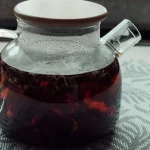Hormones, which are chemicals in your body, act as messengers that help control your cells and organs. Endocrine disruptors are chemicals that interfere with the functioning of hormones. Some endocrine disruptors are naturally occurring, while others are man-made. The Endocrine Society estimates that there are approximately 85,000 artificial chemicals in the world, and 1000 or more of these could be endocrine disruptors. These disruptors can block normal hormonal functions or mimic them in a way that “tricks” the body into producing an excess or deficit of the hormones it needs for normal functioning. It is believed that these chemicals are linked to various biological or developmental problems, including endometrial cancer.
Endometrial cancer, which occurs in the lining of the uterus, is the most common type of cancer affecting women’s reproductive systems. Estrogen promotes certain types of endometrial cancer. Dana M. Chase, M.D., a gynecologic oncologist at UCLA Health, said, “Recent research has shown that endocrine disruptors appear to be associated with endometrial cancer in women due to the increase in estrogen in their bodies.” Exposure to estrogen can cause the endometrial lining to grow excessively and eventually become cancerous.
Many studies have shown that we all come into contact with endocrine disruptors in many ways, including in the air we breathe, the food we eat, the water we drink, and the things we touch. Common types of endocrine disruptors and their uses include:
– Bisphenol A (BPA): Used in the manufacture of plastic products such as safety windows, eyewear, water bottles, and coatings for some metal cans and bottle caps.
– Dioxins: Released into the air during forest fires, backyard fires, and industrial processes such as herbicide manufacturing and paper bleaching.
– Per- and polyfluoroalkyl substances (PFAS): Used to make cookware non-stick and stain-resistant, as well as water-repellent garments.
– Phthalates: Known as “plasticizers,” these compounds make cosmetics, fragrances, nail polishes, hair spray fixatives, aftershave lotions, and shampoos last longer.
– Polychlorinated biphenyls (PCBs): Banned in the United States since 1979, products manufactured before the ban may still contain PCBs, including electrical equipment, petroleum-derived paint, plastics, adhesives, and putty.
– Triclosan: Used to prevent bacterial contamination in products such as antibacterial soaps, bath gels, and toothpaste.
Phtyoestrogens are naturally occurring estrogens found in the plants we eat. They are considered endocrine disruptors because they may have a similar effect to the body’s own estrogen. Consequently, phytoestrogens can alter the balance between estrogen and progesterone by their effect on the endometrial lining.
While the effects of phytoestrogens on the body have not been determined, they were once thought to be associated with certain cancers. However, research has indicated that there is no increased risk if you consume phytoestrogens naturally generated in plant sources or from synthetic sources.
In fact, plant-based phytoestrogens may even have benefits that protect against certain disorders, such as osteoporosis, heart disease, breast cancer, endometrial cancer, and menopausal vasomotor symptoms.
Foods that may contain phytoestrogens include:
– Soy products such as tofu and soy milk
– Peanuts and peanut butter
– Flaxseeds
– Peas
– Beans
– Beer
To avoid endocrine disruptors, the Endocrine Society suggests simple steps to reduce your family’s exposure:
– Drink filtered water, not bottled water.
– Minimize consumption of processed foods as much as possible.
– Do not store canned foods in areas where excessive heat may cause endocrine disruptors to leach into the contents of the cans.
– Reduce pesticide use in your home and yard.
A 2022 assessment article examined possible connections between endometrial cancer and endocrine disruptors, including bisphenol A (BPA), polychlorinated biphenyls (PCBs), and polycyclic aromatic hydrocarbons (PAHs). The authors concluded that there are connections between these chemicals and endometrial cancer at a molecular level. However, it is currently not known how much exposure to these chemicals each person has or at what level of exposure is dangerous.
More recently, another group of researchers compared the total estrogen burden in the blood of over 300 women. Approximately half of the women had endometrial cancer and the other half did not. The researchers were able to determine how much estrogen each woman’s body produced versus the estrogen that came from various types of endocrine disruptors. Women with higher levels of estrogen from endocrine disruptors were more likely to have endometrial cancer than those with lower levels. This study identified, for the first time, a positive association between estrogen levels from external sources and the risk of endometrial cancer.
These findings were what Chase anticipated, at least for now. “A correlation does not determine causality so, at this time, the connection between endocrine disruptors and endometrial cancer is just an interesting association,” she said. “We know that excess estrogen in the body puts women at risk for endometrial cancer and that we have products in our environment that alter estrogen levels in our bodies. But it is important for people to understand that they cannot prevent endometrial cancer just by stopping drinking water from plastic bottles. It’s not that simple.”
This educational resource was prepared with support from Merck.






